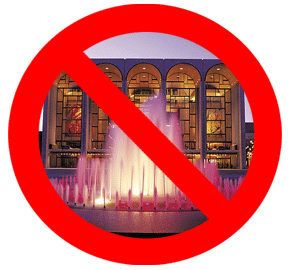Supply and Demand (the economic force that dare not speak its name)
So Rocco really stepped in it. The NEA Chairman is under siege because he dared to suggest that perhaps there’s an oversupply of arts organizations relative to the (well-documented) dwindling demand. He’s not the first to bring this up, but it surprised a lot of folks that he used his bully pulpit to express an idea that many in the arts community find repugnant and misguided.
To his credit, Landesman addressed the controversy on the NEA blog today. On the one hand, it’s nice to have an NEA Chair with the cojones to speak his mind, even if it means occasionally getting into trouble. On the other, I have to question whether this is the right time for this message to be coming from the NEA itself, given that its very existence is under attack and this may well serve as red meat to its political opponents.
Regardless, it’s hard to deny the fundamental logic behind Chairman Landesman’s assertion. The number of arts patrons in this country has been on a slow decline for a long time, while new non-profit cultural organizations are proliferating at an unsustainable pace.

It seems to me, though, that there are some unspoken assumptions in this debate that are worth bringing to the surface. I haven’t yet heard anyone argue that there’s an oversupply of art, just that there’s an oversupply of non-profit arts organizations. The real problem is that our industry still worships the cult of the eternal institution.
Repeat after me: corporations, including non-profits, are perpetual entities that are expected to outlast the participation of their founders. Not every idea — no matter how brilliant, creative, lucrative, etc. — warrants forming a new perpetual entity just to house it. Lincoln Center is not the only valid model for eager young MFA grads to aspire to. In fact, it’s a rather expensive, inflexible one, and it’s particularly ill-suited to artists whose creative interests lie on both sides of the conventional boundary between commercial and non-profit fare.
What this community needs is a little lean-and-mean, with some agile thrown in there as well. We need to embrace flexible new business entities like the L3C and make greater use of tools like fiscal sponsorship that allow ephemeral collaborations to raise charitable dollars. And for those of us running the big honkin’ institutions that aren’t going anywhere anytime soon (yes, that includes you, Rocco), we need to get better at supporting and facilitating this kind of work. Because as long as serious funding is only available to organizations with granite columns on their front lawns, and as long as major non-profit service providers devote the lion’s share of their attention and resources to those same organizations, then the proliferation of aspiring mega-institutions is only going to get worse.
About Adam Huttler
Adam Huttler is the founder and Managing General Partner of Exponential Creativity Ventures. As a six-time founder, his career’s through-line has been about helping mission-driven companies use technology to drive innovative revenue strategies. Adam is best known as the founder of Fractured Atlas, a social enterprise SaaS platform that helps artists and creative businesses thrive.


